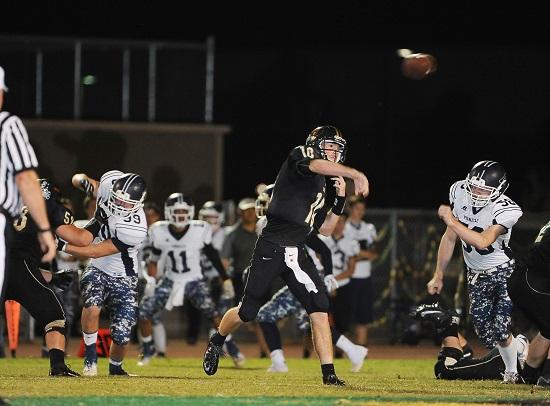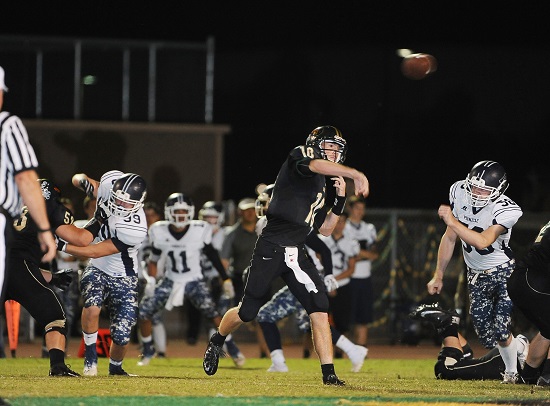

Youth sports, crucial to the economic vitality of cities, continue to be a casualty of COVID, and especially so in states where the caseload is so high that hosting any sports – particularly youth sports – has been ruled out.
Although the NFHS reports that 35 states played football this year, one state in particular – California – has seen a lawsuit to try to bring back youth sports. It’s not likely to work; similar suits have failed in other states. But for California, it’s one more front to have to fight as it simultaneously battles COVID.
The current lawsuit, filed last week in San Diego Superior Court, alleges millions of student athletes across the state have been barred from participating in athletic activities without adequate medical evidence to support the restrictions.
The complaint, made on behalf of Nicholas Gardinera, a senior at Scripps Ranch High School, and Cameron Woolsey, a senior at Mission Hills High School, alleges that 47 other states have allowed high school sports to resume, and “plaintiffs know of no evidence that allowing high school sports has led to an increase in COVID-19 transmission or hospitalization in any of those 47 states.”
Defendants include Gov. Gavin Newsom, the state Department of Public Health, San Diego County, and its public health officer, Dr. Wilma Wooten.
Additionally, the lawsuit The lawsuit tries to make the case that the absence of athletic activities during the pandemic has contributed to a rise in dropout rates, failing grades, depression, gang activity and suicidal thoughts.
The Orange County Register notes that parents, who have long counted on their children getting athletic scholarships to college, are seeing their dreams fall apart.
“For many children around our state, youth sports are a pipeline to escape poverty and have a chance at higher education via scholarships,” California State Assembly member Laurie Davies wrote in a letter dated Jan. 25. “Without the ability to play and demonstrate their skills to scouts and schools, many students have reported their desire to drop out of high school altogether or not even consider going to college. We must act quickly before we lose an entire generation of students.”
The problem, say experts, is California’s COVID caseload. It’s high, which has led to the tightened restrictions. Some teams have played regardless while others hit the road, heading for states where games were legal.
The suit itself is not unlike others, such as those filed in Illinois and New York, by parents trying to force play to continue. Those didn’t work, and it’s likely this won’t either, considering it’s making all the same points.
But it may be that California, once it gets COVID under control, is able to offer youth sports again. A recent report provides hopeful signs.
The National Federation of State High School Associations notes that a total of 35 states were able to offer football this school year – even though some of those seasons just wrapped (Michigan, the last of these, played its final match-ups in late January), football was, in fact, played, giving kids a win.
And that, they say, could be part of a trend.
NFHS notes, “Most of the other 16 states have starting dates for football in February or March, although a few are still awaiting clearance to play from state government and health officials. Seven of these 16 states have yet to play any sports this year, so while physical health concerns related to COVID-19 continue to impact decisions to play, so must the mental health of students who have been inactive since the shutdown in March.”
A complete breakdown of how football fared in each state can be found in the NFHS Fall Sports Championship Guide.
And believe it or not, there have been some new trends in youth sports.
One of the strongest emerging sports has been flag football for girls. Along with state associations in Florida, Georgia, Alaska and Nevada that have implemented programs, Alabama is involved in discussions to add the sport this year. The Georgia High School Association conducted its first GHSA Flag Football Championship in December with Calvary Day School winning the A-5A title and West Forsyth claiming the 6A-7A crown. About 90 schools were involved in the first year of sanctioned competition.
Flag is also gaining momentum at the collegiate level; this past spring, the National Association of Intercollegiate Athletics (NAIA) solicited bids from cities interested in hosting the inaugural flag football championship in 2021. The event was expected to attract between 250 and 350 student-athletes and approximately 500-600 fans.
NFHS notes that for many states, the movement inside to winter sports like basketball, wrestling and ice hockey has created problems. According to the NFHS Winter Sports Seasons Guide indicates, 21 states have yet to start regular-season basketball games, and 38 states have made modifications to their wrestling seasons. (It also lists mask requirements for various states).
And in the 30 states that have started basketball, it has been a case of two steps forward, one step back with virus protocols that have shut down individuals and/or teams. In addition, local health restrictions have limited fan attendance to family/friends only, or just 25 percent capacity in some areas.
But some states are relaxing restrictions. A few weeks ago, Iowa’s governor struck down statewide restrictions on spectators for high school sports, noting that school districts could set their own limits if they wanted.

